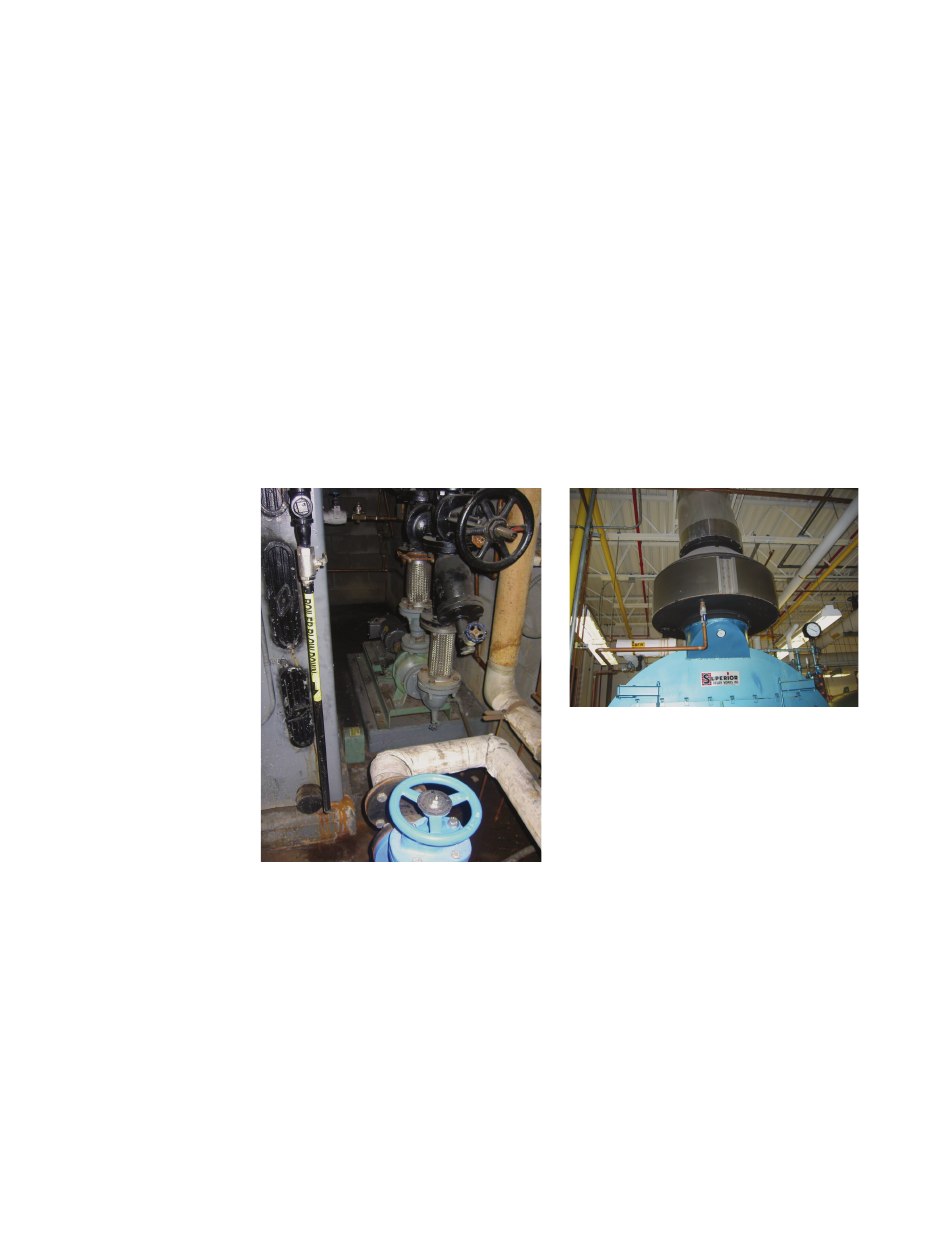Retrotec USACE User Manual
Page 184

D54 ENERGY & PROCESS ASSESSMENT PROTOCOL
result would be wasted heating energy, raising the temperature of the extra air.
This condition can be caused by faulty boiler controls, inoperable dampers, or
dirty burners. More than 20% excess air is more than needed; improvements
can be made to better control it (e.g., Figure D91).
D.4.1.18 Flue Gases More Than 65.5 °C (150 °F) Warmer Than
Leaving Hot Water or Steam Temperature (Ineffi ciency)
The temperature of the fl ue gas is a measure of the combustion effi ciency
of the boiler. Temperatures in the combustion chamber can exceed 815.5 °C
(1,500 °F). This heat is transferred to the water in the boiler. The lower the
leaving temperature of the combustion gases, the better the heat transfer.
Some boilers have economizers installed to transfer heat from the fl ue gases to
the incoming boiler water or combustion air. If the combustion temperature is
65.5 °C (150 °F) greater than the leaving water temperature, the opportunity
to recover some of this energy may be cost-effective.
D.4.1.19 Blowdown Water Warmer Than 60 °C (140 °F) (Waste)
Figure D93. Boiler economizer installed
in stack to preheat boiler water. Note
thermometer before economizer in stack for
temperature measurement.
Figure D92. Boiler blowdown with no
provision to recover heat from hot water.
Blowdown water is used to remove sludge and keep the concentration of dis-
solved and suspended solids at appropriate levels. This water is discharged
from the boiler at a temperature close to 100 °C (212 °F) (Figure D92). The
makeup water enters the system at room temperature or less; thus, there is an
opportunity to transfer heat from the blowdown water to the makeup water
through a heat recovery unit (Figure D93). Also, note that it is against most
building codes to discharge water greater than 60 °C (140 °F) into sanitary
sewer systems.
